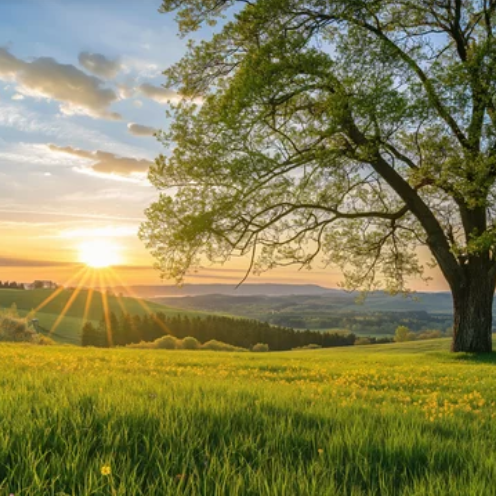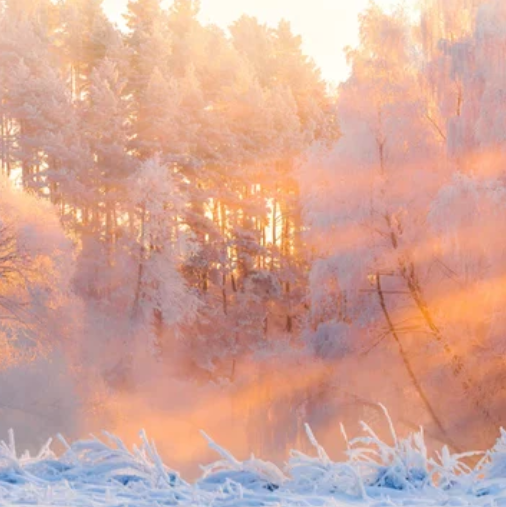DET Speak About the Photo 5 - Template and Strategies for Answering Natural Landscapes Type Questions
DET Speak About the Photo 5 - Template and Strategies for Answering Natural Landscapes Type Questions
Welcome back to the Speak About the Photo - Template series! In Series 4, we explored example questions and strategies for street scenes and architecture. In this blog, we'll delve into strategies and sample questions for Natural Landscapes Type Questions.
|
Speak About the Photo |
Portraits of people |
|
Art |
|
|
Street scenes and architecture |
|
|
Natural landscapes |
|
|
Events and gatherings |
|
|
Flora and fauna |
|
|
Food |
|
|
Indoor objects |
Strategies for Answering Natural Landscapes Type Questions: Six-Step Method
We have summarized six steps for the problem-solving methods related to natural landscapes, and we will analyze these steps using the following image as an example.

1. Start with the overall impression: Begin with a general description of the scene, including the time, weather, and the mood it conveys.
Example: “This picture shows an expansive meadow under a soft haze, where sunlight streams down from above, creating a dazzling glow.”
2. Describe the main elements: Identify key elements in the image, such as mountains, forests, rivers, or fields, and use adjectives to describe their size, shape, and color.
Example: “In the distance, we see rolling mountains cloaked in a thin mist, while in the foreground stands a large, twisted tree with lush, green leaves.”
3. Focus on details: Highlight specific details that make the scene unique or interesting. This could include unusual plants, animals, or natural formations.
Example: “The meadow is dotted with bright yellow flowers, gently swaying in the breeze, which adds a vibrant touch to the serene landscape.”
4. Use sensory language: Describe possible sensory experiences by detailing the appearance, sounds, smells, or tactile sensations of the scene.
Example: “You can almost feel the warmth of the sun on your skin and hear the soft rustling of leaves as the gentle wind passes through the tree branches.”
5. Create an atmosphere: Use vocabulary that conveys emotions or moods to express the feelings or atmosphere evoked by the picture.
Example: “The overall feeling of this scene is one of tranquility and beauty, evoking a sense of peace and relaxation for the viewer.”
6. Use similes and metaphors: Enhance the description by comparing elements in the image to other objects, using similes or metaphors.
Example: “The clouds are like delicate cotton puffs drifting in the sky, while the sun is a radiant orb illuminating the landscape with its warm embrace.”
Sample Answer: This picture shows an expansive meadow under a soft haze, where sunlight streams down from above, creating a dazzling glow. In the distance, we see rolling mountains cloaked in a thin mist, while in the foreground stands a large, twisted tree with lush, green leaves. The meadow is dotted with bright yellow flowers, gently swaying in the breeze, which adds a vibrant touch to the serene landscape. You can almost feel the warmth of the sun on your skin and hear the soft rustling of leaves as the gentle wind passes through the tree branches. The overall feeling of this scene is one of tranquility and beauty, evoking a sense of peace and relaxation for the viewer. The clouds are like delicate cotton puffs drifting in the sky, while the sun is a radiant orb illuminating the landscape with its warm embrace.
The Answer Template for Natural Landscapes Questions
Special Note: In the template sentences, there will be two colors of text. Black represents fixed phrases, while blue indicates flexible phrases.
1. The picture captures a [adjective] [natural feature or landscape], with [element 1] and [element 2], creating a [adjective] visual spectacle.
2. The [nature or outdoor view] in the photo is characterized by its [adjective][flora or fauna], such as [specific plant or animal], which [effects on the environment or ecosystem].
3. In the image, the [nature or outdoor view] offers a [adjective] perspective of the [specific location or region], with [geographical feature 1] and [geographical feature 2], which [effect on the viewer].
4. The [nature or outdoor view] in the photo is set against a [adjective] [sky or atmospheric condition], with [feature or effect 1] and [feature or effect 2], creating a [adjective] ambiance.

Sample Answer: The photo captures a breathtaking winter landscape, with snow-covered forests and golden sunlight filtering through the trees, creating a mystical visual spectacle. The outdoor view is characterized by its tranquil atmosphere, with thick layers of snow that reflect the sunlight, enhancing the serene environment. As the sun rises, it casts a warm glow, illuminating certain areas with soft pinkish hues that add depth to the scene's beauty. In the image, the winter scene offers a captivating perspective of the stillness of nature, as the interplay of light and shadow creates a beautiful ambiance that invites contemplation. This enchanting moment, where the chill of winter meets the warmth of dawn, evokes a sense of peace and wonder, making it a truly awe-inspiring sight. The combination of crisp air and gentle sunlight creates a magical atmosphere, reminding viewers of nature's ability to inspire and soothe the soul.
Further Reading:
l DET Speak About the Photo 1 - Template and Strategies for Answering Portraits of People Type Questions
l DET Speak About the Photo 2 - Template and Strategies for Answering Transportation Type Questions
l DET Speak About the Photo 3 - Template and Strategies for Answering Art Type Questions






